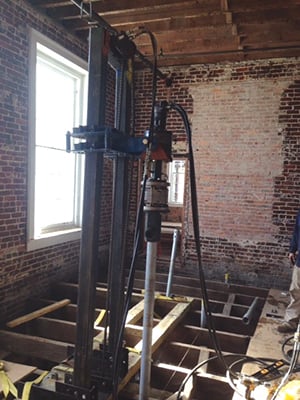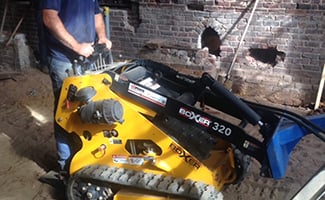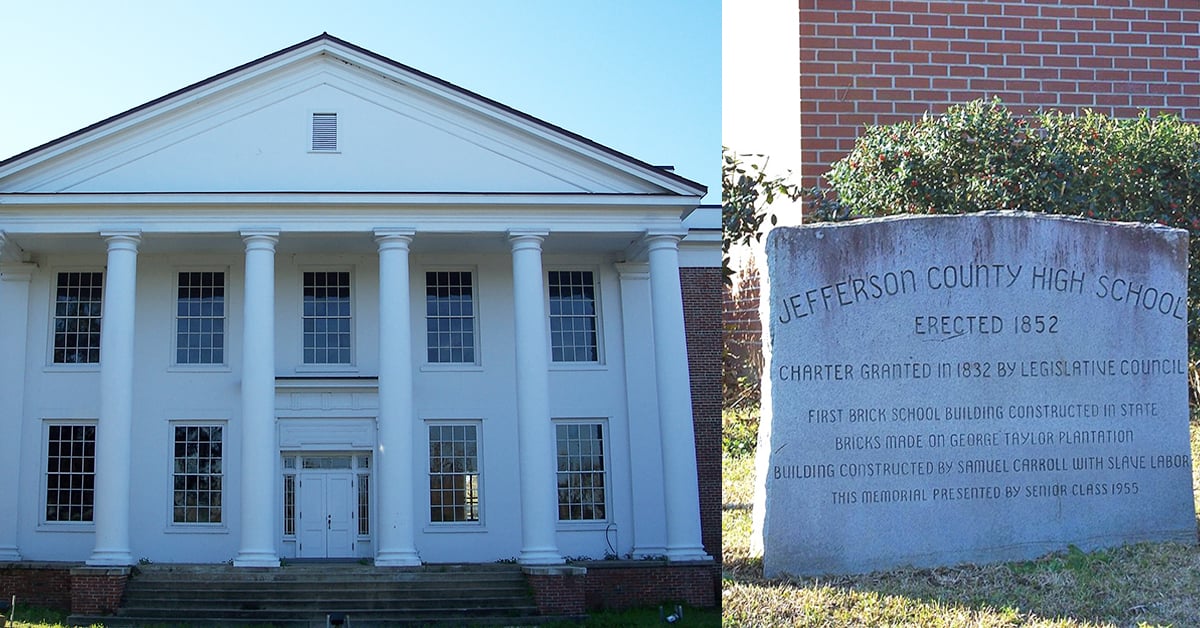Built in 1852, the Monticello High School (also known as the Jefferson Academy and Jefferson County High School) was the first brick public school built in Florida. The school was built using slave labor using kiln-fired bricks, made locally... also by slaves. The school was added to the National Registry of Historic Places in 1999 but has been vacant since 1991 due to needed repairs. The State Legislature approved funding for the historic school rehabilitation in 2010.
The remediation plans called for shoring of the existing floor system and roof trusses. Soil testing identified layers of highly plastic clays, therefore requiring a deep foundation solution to support the design. General Contractor Riley Palmer Construction worked with CHANCE Certified Installers at Mason Grady Foundation, LLC to come up with the best solution.

Combo Piles for Best Foundation
 CHANCE® helical piles were the best deep foundation solution for this application because they can be installed easily in areas with limited access utilizing hand-held or small construction equipment. CHANCE type SS150/RS2875.276 helical combo piles with a single 6″ helix were specified to support the new footings and girders. The combo pile consists of a square shaft lead section and a round shaft extension:
CHANCE® helical piles were the best deep foundation solution for this application because they can be installed easily in areas with limited access utilizing hand-held or small construction equipment. CHANCE type SS150/RS2875.276 helical combo piles with a single 6″ helix were specified to support the new footings and girders. The combo pile consists of a square shaft lead section and a round shaft extension:
-
-
The square shaft is better suited to penetrate dense soil.
-
The round shaft extensions offer more lateral resistance with more of the shaft exposed to the surrounding soil. The hollow round shaft extensions can also be filled with grout to increase stiffness and to help protect against corrosion.
Unique Installation – Custom-Built Mobile Unit

The piles were installed with an Eskridge 8K drive-head that was mounted on a Boxer 320 Compact Utility Loader and for the less accessible areas a custom-built mobile unit was used. New construction caps were added to the piles for connection to the poured concrete footings and a specially designed walkway style bracket was added to the piles to allow for connection to the new wood support beams.
Pile depths ranged from 20-22 feet below existing grade with 18 kip working load in compression. Final installation torques were 4,800 – 5,200 ft-lbs. Helical pile installation took approximately three weeks to complete.
According to CHANCE Certified Installer, Mason Frascona, “Because of the limited access and problematic soil conditions, the project was a perfect fit for helical piles. It was also a great example of the versatility of helical piles. No other product could be installed with such ease inside this old building with no risk to the existing foundations, while permanently supporting the new beams, old beams, and new concrete footings. We were thrilled to be part of such a unique project, and work on a building with such historical significance.”
Key Benefits:
-
-
-
Limited access
-
Time to install faster than concrete
-
Standard equipment for installation
-
Labor savings – smaller crews
-
No spoils to remove
-
Inclement weather installation
-
Immediate proof testing and loading
-
Low to no vibration/noise
Learn more about what is possible with helical pile foundations if you are facing a challenging engineering or construction project. Contact your local distributor.

